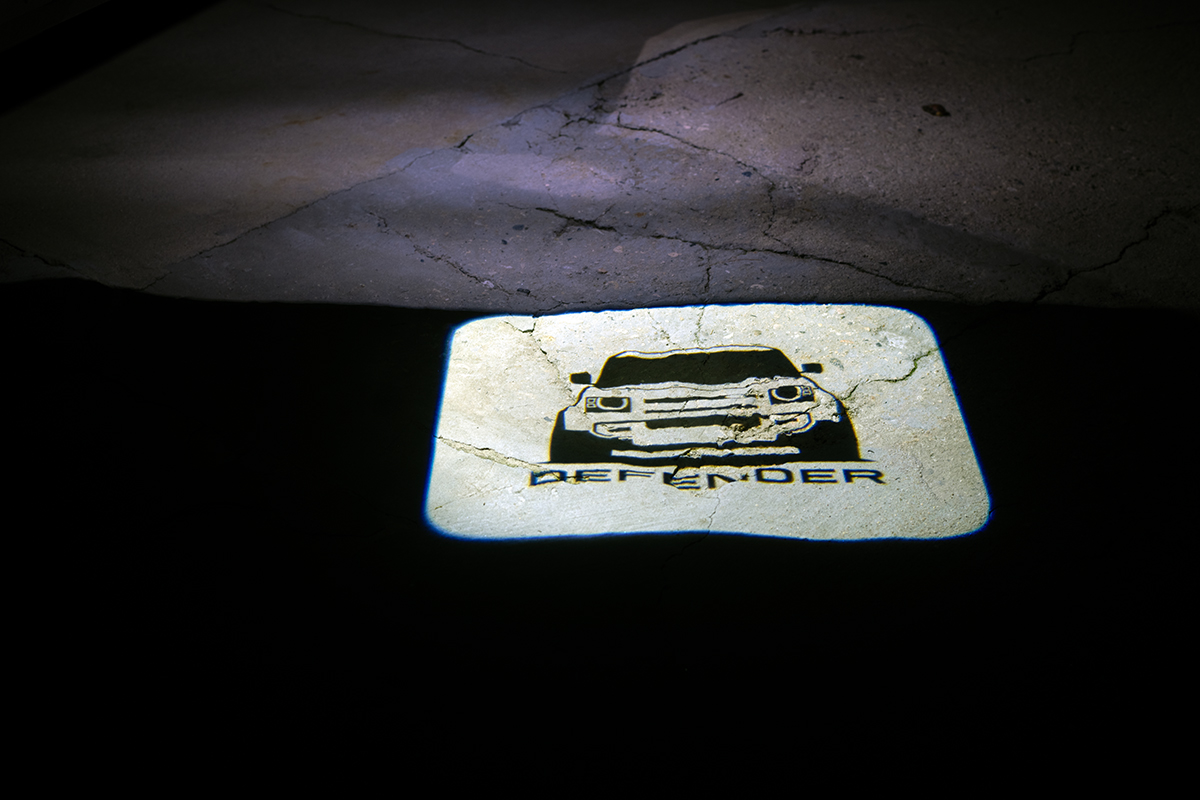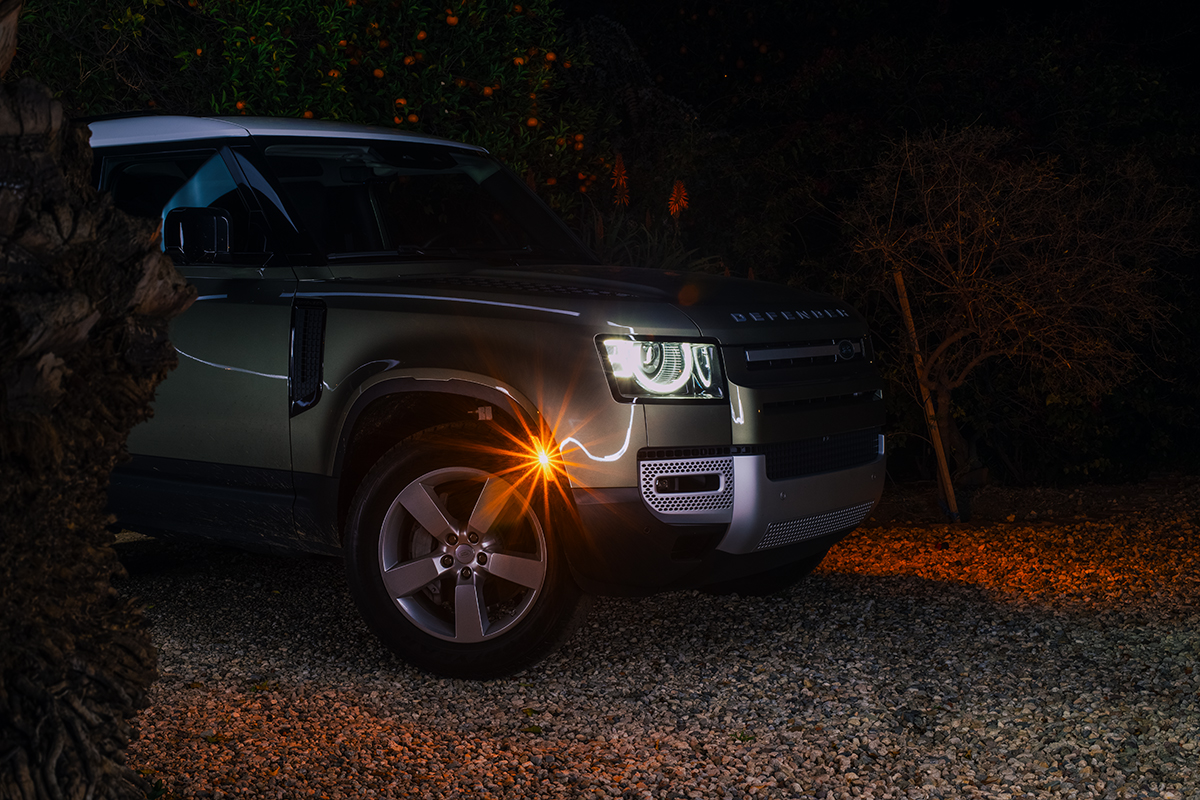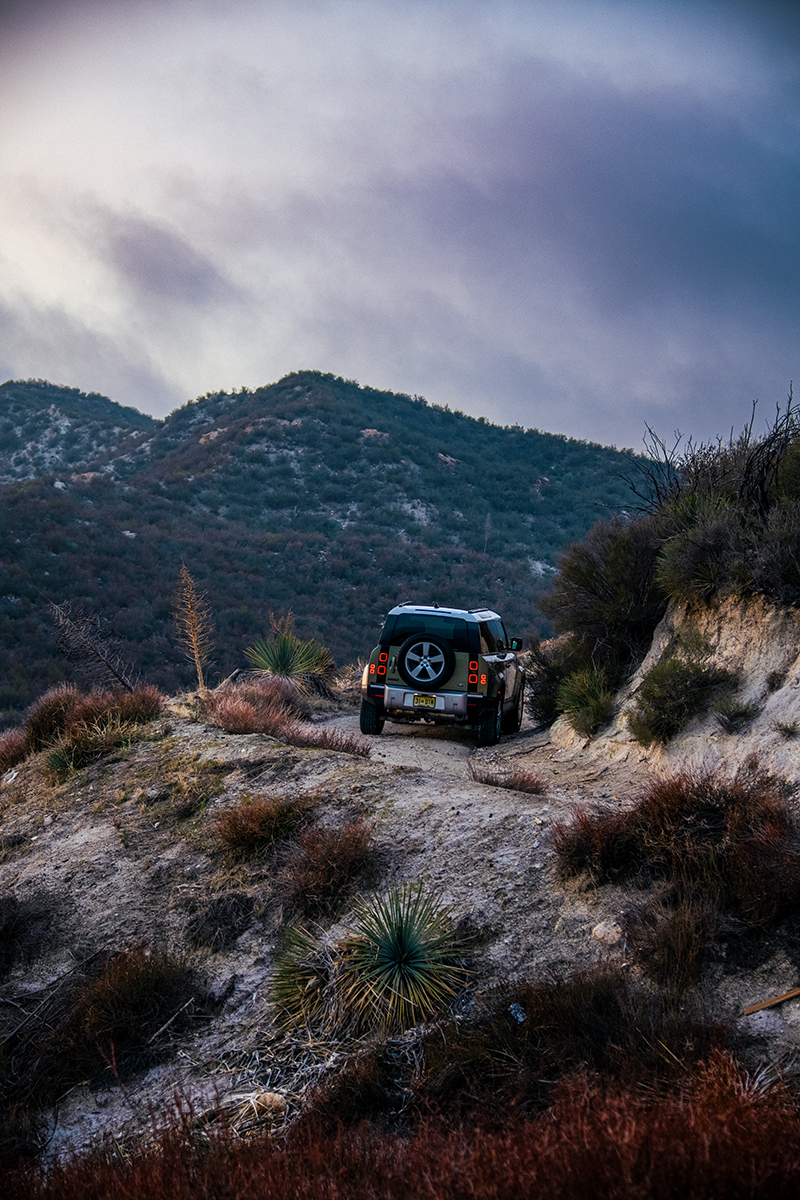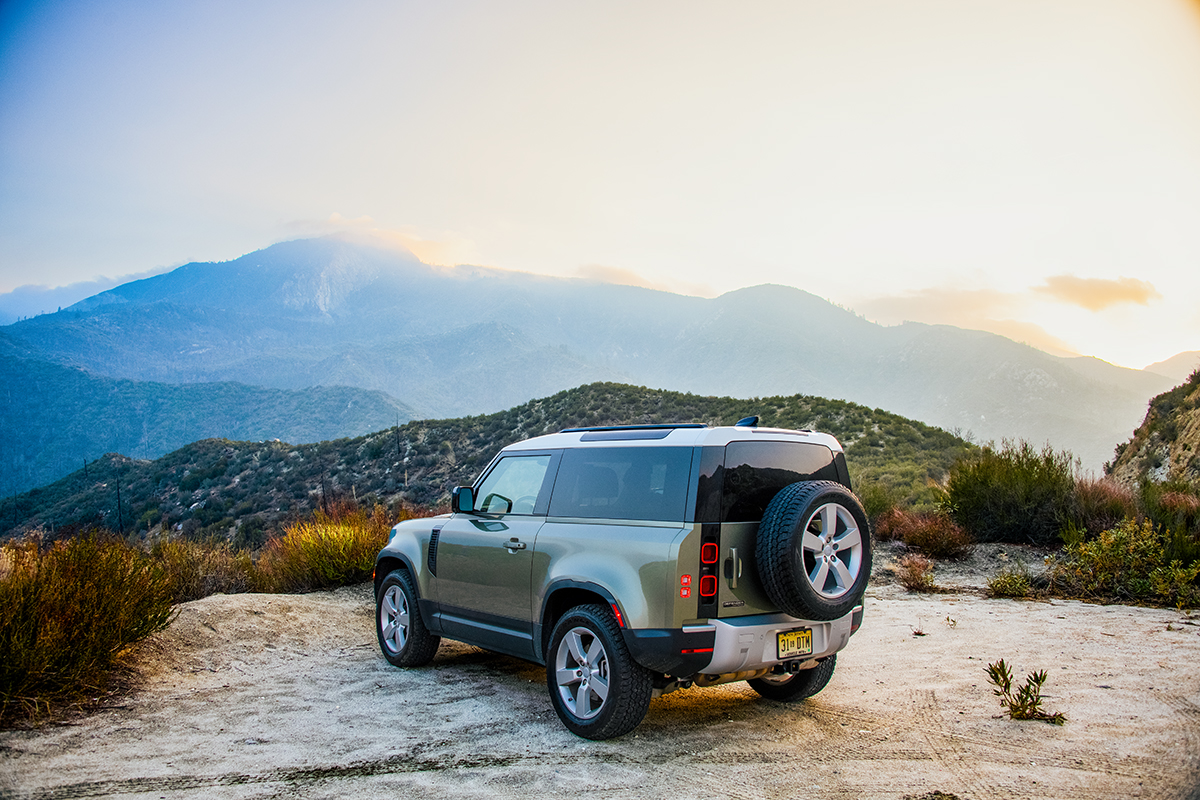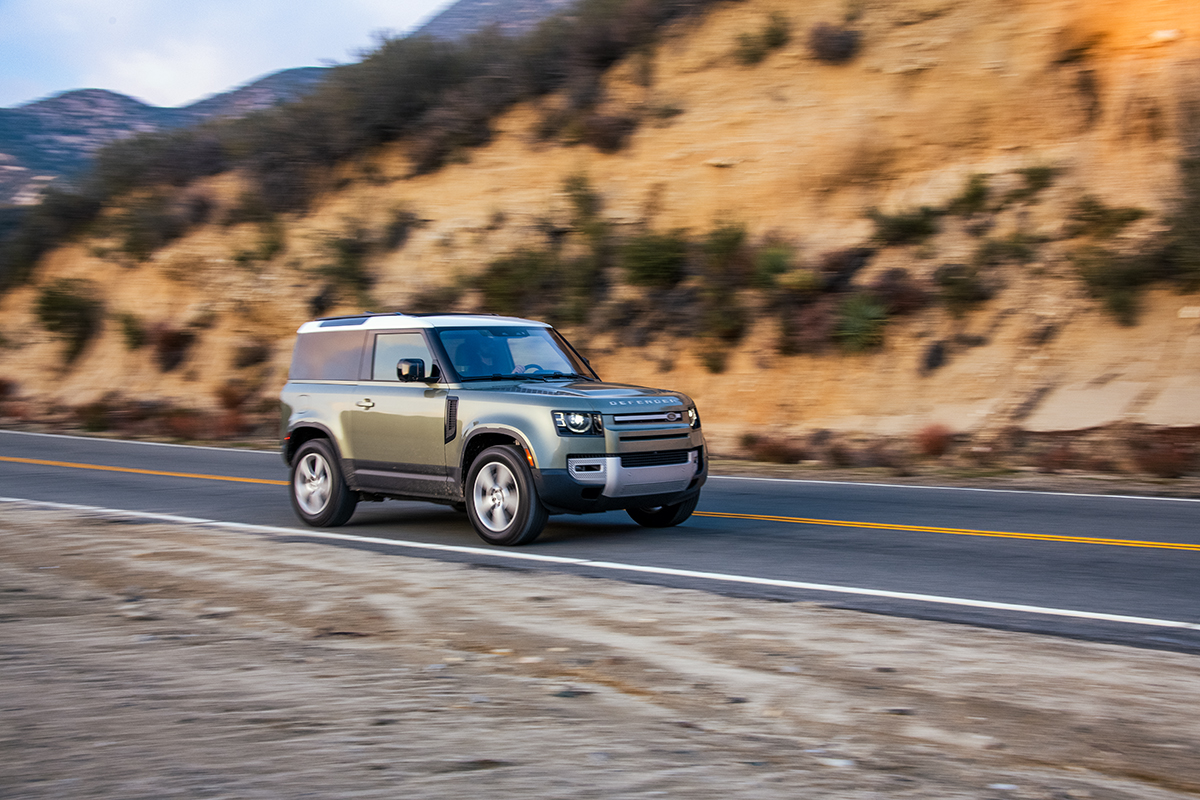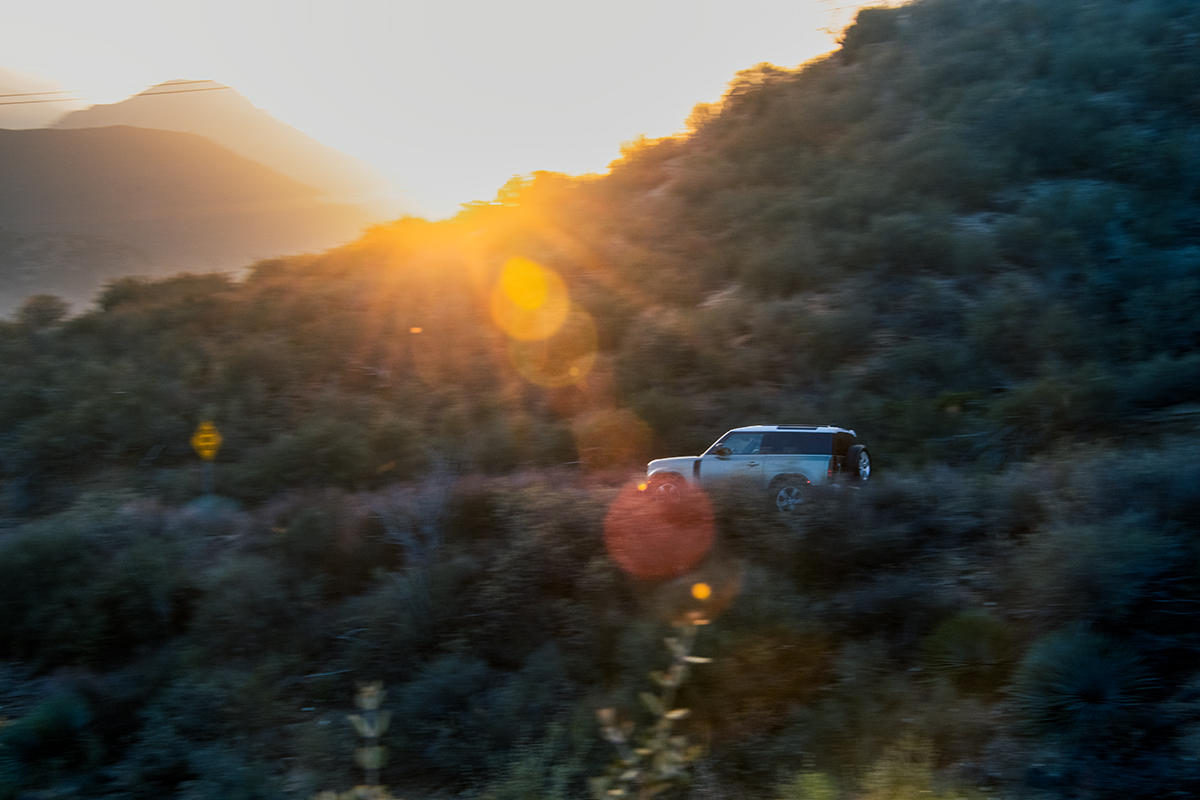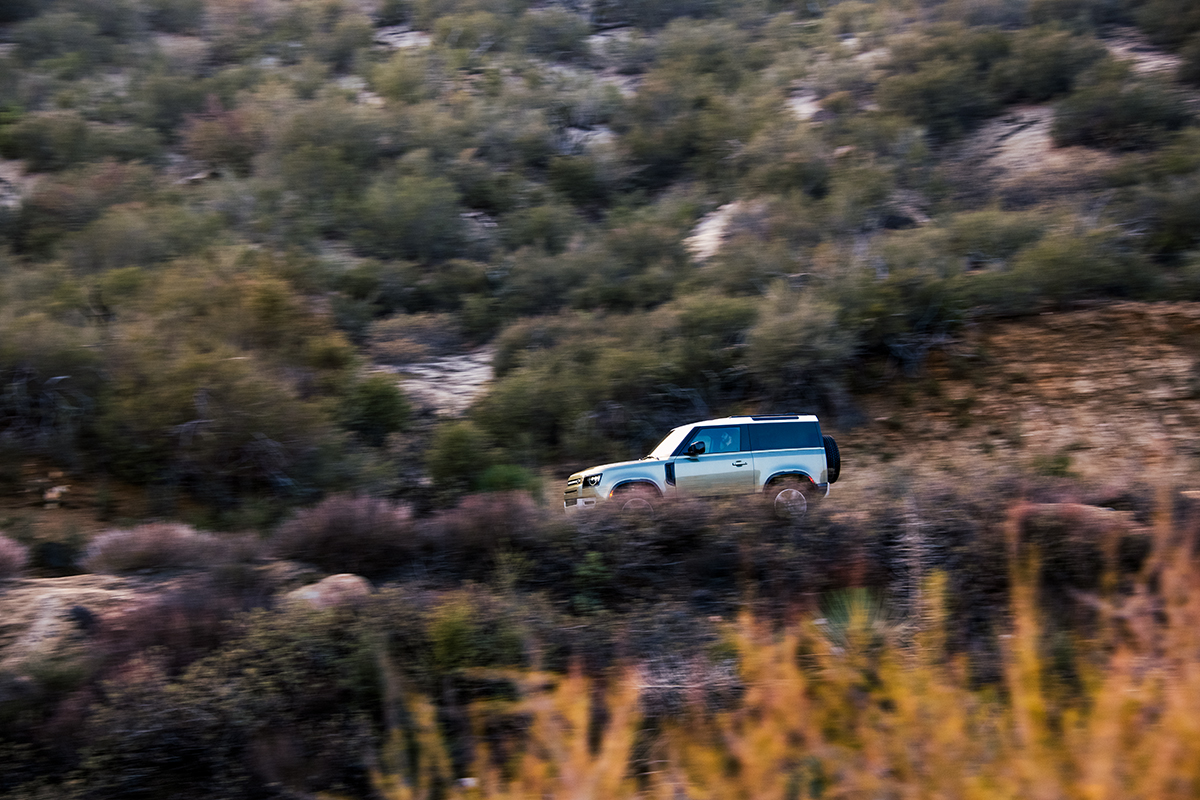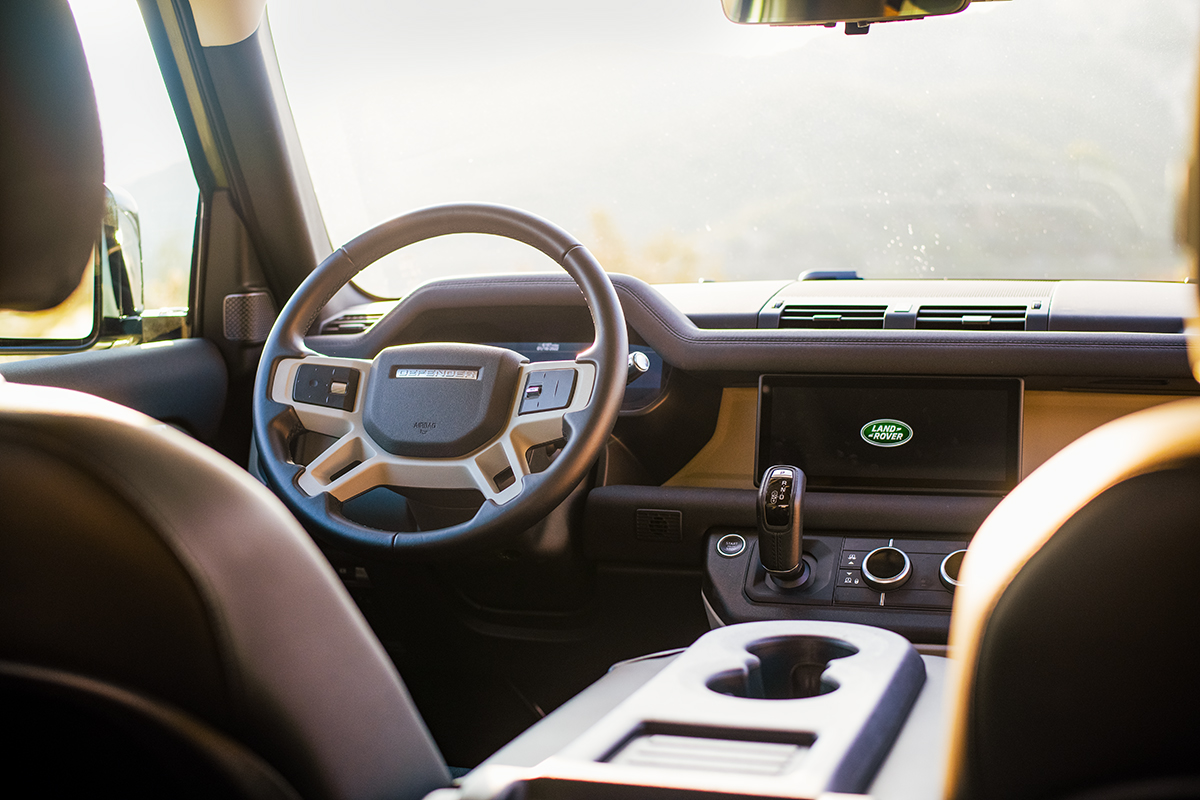Exploring the Land Rover Defender 90: A True Off-Road Icon Reborn

Words and Photos by Jennifer Jensen
When it comes to “iconic” in the world of automobiles, the word tends to get thrown around a lot, mostly for sports cars like the Porsche 911 or even the Ford Mustang. But the Land Rover Defender? It earns that title with grit, having proven its mettle in some of the toughest terrain for decades. The new Defender 90, the short-wheelbase version in the Defender lineup, has all the trademarks of the original with a modernized twist. And after a few days of putting it through its paces, from mountain trails to highway stretches, I can safely say this is the most capable Defender yet.
Design and Structure: Short, Sturdy, and Stands Out

The Defender 90 is the short-wheelbase model, sporting two doors and a rear door that swings open to the side. That rear door is sturdy, but a word of caution—on an incline, it doesn’t always stay open, so watch your fingers! A split rear door would’ve been a nice touch for practicality, especially since that single door is as heavy as the rest of the car feels.
The Defender 90 isn’t just a compact SUV; it’s more like a stout, utilitarian rig that looks rugged and ready for anything. Land Rover stayed true to the utilitarian roots here. This is a vehicle made for farmers, military operations, and anyone needing to cross streams, climb rocks, and carry heavy loads. And it looks the part.
Inside, the Defender 90 offers more than a few reminders of its heritage. Exposed bolts and grab handles are a nod to its rugged background, yet they’re incorporated in a refined way. You also have a big, open center area where you can stash items behind the central screen. The Defender manages to look like it’s ready to tackle the wilderness and attend a high-society gala all in one go.
Power and Capability: Engines That Pack a Punch

The Defender 90 offers a couple of different engine options. You can start with an inline 4-cylinder that delivers just under 300 horsepower and 295 lb-ft of torque, which is more than enough for most trails. Or, you can opt for the 6-cylinder engine, a mild hybrid setup that combines turbocharging and a 48-volt electric supercharger to give you 395 horsepower and 406 lb-ft of torque. This inline-six has a smooth power delivery that works well on- and off-road. Plus, the full-time all-wheel-drive system means that all four wheels are always engaged, giving you maximum traction whenever you need it. This isn’t some on-demand let me slip the wheels a bit and then give you traction system. This is gripping all-the-time.
This thing can literally climb mountains. 45 degrees up, 45 degrees down, even 45 degrees of side slope, it doesn’t matter. The Defender will just do it. Maybe Nike should get in on this action.
The Defender 90 is capable of wading through almost three feet of water—35.4 inches, to be exact. And yes, it’s built for those moments. In wade mode, cameras in the mirrors activate to give you a view of the water as you cross, letting you see the waves you’re making without getting out of the vehicle. This setup, combined with its impressive approach, departure, and break-over angles, allows the Defender to navigate some of the harshest terrains without missing a beat.
Off-Road Technology: Terrain Response Done Right
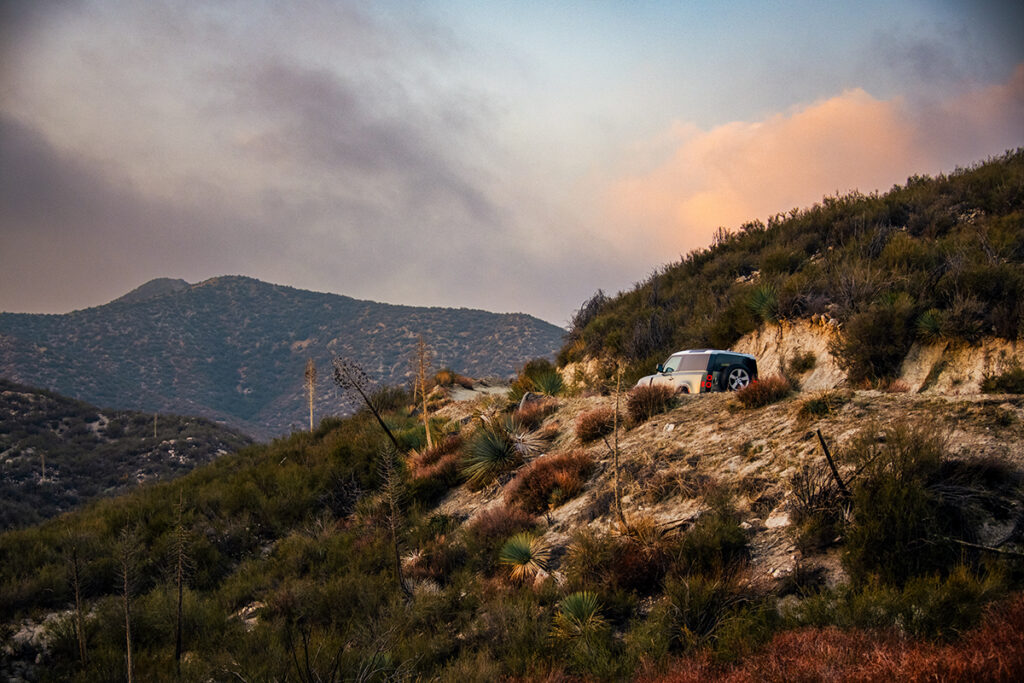
Land Rover equipped the Defender 90 with the latest version of its Terrain Response system, which includes modes like General, Grass/Gravel/Snow, Mud/Ruts, Sand, Rock Crawl, and Wade. These modes help drivers adjust the vehicle’s throttle response, traction, and suspension settings to match the demands of the environment. And with the air suspension, you can raise or lower the Defender depending on the conditions—up to an additional 5.8 inches for those trickier paths or down 1.5 inches for easier access.
The Defender’s monocoque construction offers three times the rigidity of a traditional body-on-frame build. This means that when you’re tackling uneven terrain or scaling rocks, the Defender maintains a solid, stable feel without flexing. Whether it’s handling deep mud or the rougher trails, this setup brings a level of capability that keeps it firmly in place as one of the best off-roaders on the market.
Interior Comfort and Features: Utility Meets Luxury

Inside, the Defender 90 is all about functionality. At 6’2”, I still have plenty of headroom, which says a lot given the compact nature of this SUV. The layout inside is open and utilitarian but with modern touches that make it feel current.
The 12.3-inch touchscreen in the center is powered by Land Rover’s Pivi Pro system. It’s quick and responsive—though not without occasional lag—but it’s an improvement over earlier systems. The screen is easy to read, and you can adjust everything from navigation to media without fuss. You also have digital instrument displays and a few physical knobs for climate control, which is a nice mix of old-school and new-tech that makes interacting with the Defender a little more intuitive than some all-screen-interactive systems found in other vehicles.
An option worth considering is the third seat in the middle up front. It folds down when not in use to act as an armrest, adding an extra level of practicality. Rear seating, however, is a bit of a process. The mechanism requires a pull of a handle, a press of a button, and a rather long wait while the front seats slide forward. It’s functional, but not the smoothest setup. Once in the back, though, there’s plenty of headroom and legroom, making it a comfortable option for those who don’t mind climbing in.
Cargo space is limited, especially with the back seats up. You’ll have enough room for a few grocery bags or maybe a couple of carry-ons, but it’s not vast. And if you fold the seats down, the padding on those seats means they don’t lie completely flat, which could be a dealbreaker for some. The Defender 90 prioritizes passenger comfort over cargo, so plan accordingly.
Driving Impressions: How Does It Handle?

This Defender may be purpose-built for off-road, but Land Rover didn’t forget about on-road refinement. It handles surprisingly well for a vehicle of its height and shape, staying composed even on winding roads. The ride is smooth enough that you won’t be bouncing around when hitting some rougher patches, yet it maintains the solid feel that Defender fans know and love.
Steering, as expected, isn’t razor-sharp; it’s a bit more relaxed, which suits the character of the Defender. It’s not designed for precision cornering, and it’s clear this is a vehicle that prefers a trail to a twisty back road. The steering feel makes sense in the context of off-road navigation, and if you’re exploring trails, it feels right at home.
Fuel economy, on the other hand, is more in line with a truck than a crossover. I averaged around 17.9 mpg, which isn’t bad considering you’re always driving in all-wheel-drive mode. The fuel tank is adequately sized so you won’t be looking for a gas station once you’re out on the trails.
Additional Features Worth Mentioning

Land Rover equipped the Defender with plenty of tech and features that enhance its usability. One of my favorites is the rearview mirror, which doubles as a rear camera display. It’s great for those times when you’re towing or dealing with poor visibility, offering a clearer, wider field of view than a traditional mirror.
Another clever touch is the third sun visor above the rearview mirror, which is perfect for keeping those small bits of sunlight out of your eyes on early morning or late afternoon drives. And in a welcome move, Land Rover put the auto stop/start button right on the dash for easy access. You can disable it with one quick press, which is a small but important feature for those of us that don’t think starting and stopping your engine a thousand times a day is a good thing.
Our Defender 90 also had a retractable roof panel. So imagine a big panoramic glass roof. Now change that glass into cloth and make it moveable. That’s what this thing had. It’s nice to get the fresh air, but I am certain I would choose a regular metal roof and maybe add a sunroof if I wanted the sky above me. I worry that the top would just start leaking over time.
The Verdict: A Defender in Every Sense

The Defender 90 is an SUV with a purpose—it’s rugged, ready, and well-equipped for off-road adventures. Land Rover stayed true to the Defender’s heritage while giving it a serious performance and comfort upgrade for modern drivers. It’s not going to be everyone’s cup of tea, and if cargo space is your priority, you might want to consider the four-door 110. But if you’re looking for a shorter, more maneuverable Defender with serious trail capability, the 90 hits the mark.
With multiple trim levels, including the Defender X and the first edition, plus packages like the Explorer, Adventure, Country, and Urban, there’s a Defender for every lifestyle. And if you’re the kind of driver who sees a dirt path as an invitation, the Defender 90 will take you there and back with ease. In the end, it’s everything you’d want from a Land Rover and more, carrying on the brand’s legacy of crafting some of the most capable 4x4s on the planet.
